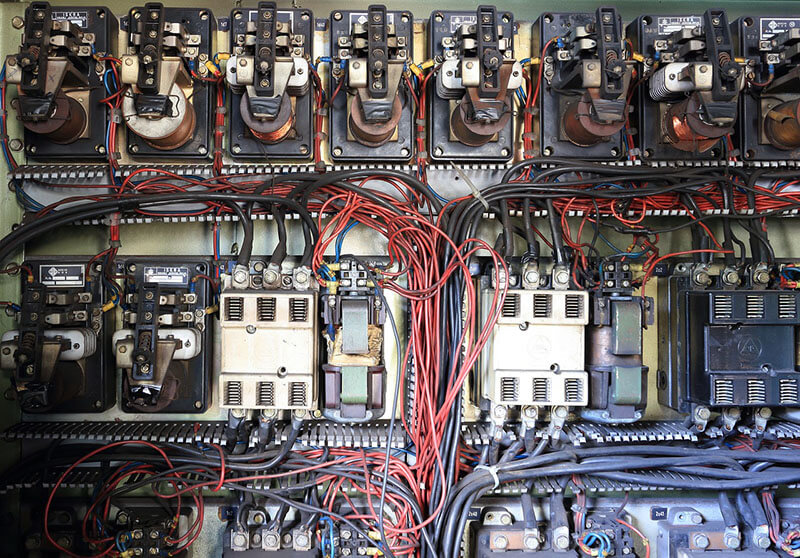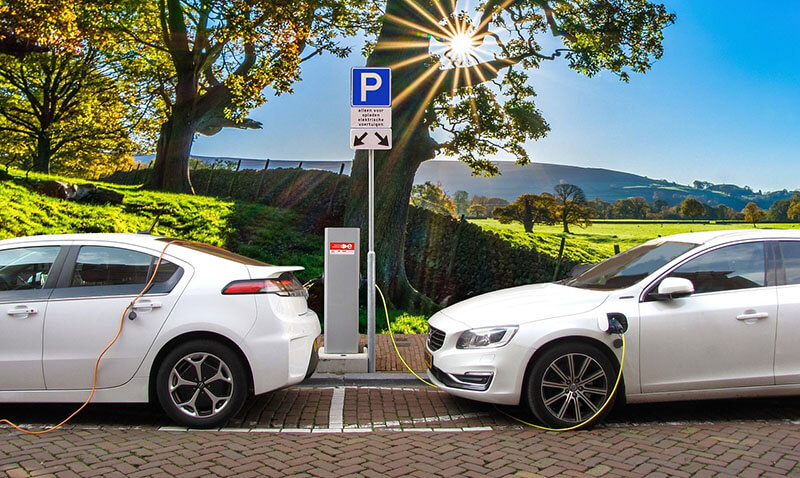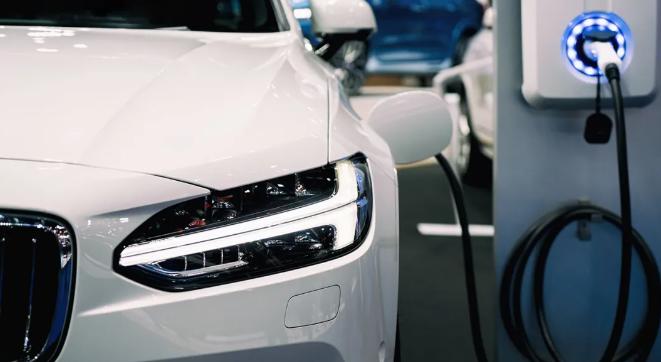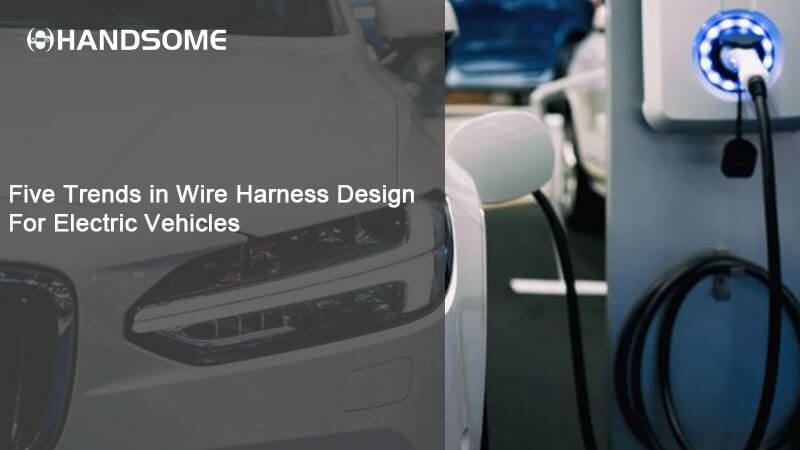Table of Contents
EV Wiring Harness Trends: A Design Revolution
The rise of electric vehicles (EVs) is a major force in automotive wiring innovation.
EVs and hybrids require complex wiring systems to manage high-voltage electric drivetrains, batteries, and advanced electronics.
These systems require specialized wiring harnesses that can handle the increased voltages and complex electric propulsion connections.
The demand for these wiring harnesses is expected to increase significantly over the next decade. This growth is driven by a variety of factors, including the proliferation of advanced driver assistance systems, stricter government regulations, the expanding connected car ecosystem, and greater integration of communications devices in vehicles.

Here are five trends we’ve noticed in EV wiring harness design:
Growing Demand for Advanced Safety and Comfort Features
Advanced Driver Assistance Systems (ADAS) and crash safety features require complex and robust wiring harnesses to manage high-speed data transmission and reliable power connections.
The integration of vehicle-to-everything (V2X) communications also requires wiring harnesses that support reliable connectivity and data exchange.
Comfort features such as infotainment systems, climate control, and electrically adjustable seats add complexity that requires extensive and efficient wiring.
To accommodate these features without adding weight to the vehicle, wiring harnesses are being designed to be more compact and lightweight, using thinner wires, advanced materials, and optimized routing strategies.
Ensuring durability and reliability is critical, driving the adoption of high-quality materials and advanced manufacturing methods.
In addition, the flexibility of modular and scalable wiring harness designs facilitates straightforward upgrades and customization to accommodate a wide range of vehicle models and trim levels. Together, these developments improve vehicle safety, comfort, and contribute to the continued advancement of automotive technology.
Fiber Optics: High-Speed Data Transfer and Connectivity
Fiber optics are increasingly important in EV wiring, particularly due to their capabilities in high-speed data transfer and connectivity needs.
Unlike traditional copper wires, fiber optics offer higher bandwidth and data transfer speeds, making them indispensable for processing large amounts of data quickly and reliably.
This capability is essential for powering advanced driver assistance systems (ADAS), infotainment setups, and vehicle-to-everything (V2X) communications, enabling real-time data processing essential for autonomous driving features and dynamic traffic updates.
Fiber optics also exhibit superior immunity to electromagnetic interference (EMI) and signal attenuation over long distances, ensuring consistent performance and data accuracy across different automotive environments.
Their integration supports seamless connectivity within ADAS networks, improving the precision of safety features such as collision avoidance and lane keeping assist.
Modular wiring systems for customization
Modular wiring systems are transforming EV wiring harness design by increasing flexibility and customization capabilities. These
systems use prefabricated modules or wiring segments that can be easily interconnected or replaced to accommodate a variety of vehicle configurations and optional features. This adaptability simplifies the manufacturing process and speeds up the assembly line.
Each module undergoes rigorous testing and adheres to standardized specifications, ensuring consistent quality and reliability across different models and production runs.
Modular design benefits maintenance, making repairs easier by allowing individual modules to be replaced without extensive disassembly. This, in turn, reduces downtime and repair costs.
In terms of cost benefits, while initial setup expenses may be higher due to module development, long-term savings can be achieved through simplified assembly procedures, improved inventory management, and streamlined aftermarket services.
Modular systems also enable automakers to quickly adopt new technologies, such as ADAS and connectivity solutions.
This feature ensures that vehicles remain competitive and meet evolving regulatory standards.
Ultimately, modular wiring systems play a vital role in improving production efficiency and enabling electric vehicles to effectively meet different consumer preferences and technological advancements.
Smart Wiring Harnesses
Smart wiring harnesses with integrated sensors use real-time data collection and analysis to predict potential faults and problems in EV electrical systems.
This proactive approach enables vehicle systems or maintenance personnel to detect early warning signs and take preventive measures, such as inspecting and repairing problem areas before they cause serious failures.
As a result, this predictive maintenance strategy reduces downtime, improves vehicle reliability, and effectively reduces overall maintenance costs.
Ultimately, these advances help improve vehicle safety and performance by proactively addressing potential issues before they affect vehicle operation.
Environmental Sustainability in Wiring Harness Production
The focus here is on minimizing the environmental impact of the entire wiring harness lifecycle.
This means using environmentally friendly materials (such as recycled plastics) and lightweight options to reduce the vehicle’s footprint.
In addition, manufacturers are optimizing production to minimize waste and use renewable energy.
Finally, designing wiring harnesses that are easily disassembled allows for proper recycling and reduces landfill waste. These practices pave the way for a more environmentally friendly automotive industry.
Why Automation is Key to Electrification Wire Harness Production

EV wire harnesses and other EV electrical systems are becoming a production bottleneck.
First, electric vehicles require nearly twice as much wiring as fossil fuel vehicles. Traditional manual production struggles to keep up with the sheer volume and complexity of EV wiring.
Unlike standard wiring harnesses, EV versions manage separate high-voltage systems for the battery and motor, adding complexity. The growing scarcity of skilled labor further tightens the knot.
Automation becomes the hero, untangling this wiring maze. New approaches integrate electrical functionality directly into components, enabling lighter, more compact designs.
Imagine 3D-printed parts with built-in wiring, eliminating waste and the need for oversized cables.
The benefits extend beyond efficiency. Automation opens up a completely digital design process.
Imagine seamlessly integrating electrical functionality into any surface, curved or flat.
This enables manufacturers to push the boundaries of EV design and expand this approach to every industry that relies on electrical functionality.
The success of electrification depends on the ability to produce these complex wiring harnesses.
Automation, capable of handling increased volume, lighter wire harnesses, and complete design digitization, is key to unlocking the full potential of electrification and a cleaner future.
How Smart Wire Harness Manufacturing Drives the EV Market
Smart wire harness manufacturing has great potential to enhance the EV market through several key advancements:Advanced Data AnalyticsBy integrating sensors and data analytics into wire harness manufacturing, manufacturers can gather real-time insights into production processes.
This allows for continuous monitoring of quality metrics, production efficiency, and predictive maintenance of equipment.
For the EV market, this means improved reliability and quality assurance in wire harness production, thereby improving vehicle performance and durability.
Integration of IoT with Industry 4.0IoT (Internet of Things) technology enables connectivity between machines, systems, and processes in a manufacturing environment.
In an EV wire harness manufacturing environment, IoT facilitates seamless communication and data exchange between assembly line components.
This integration supports adaptive manufacturing processes, where production systems can dynamically adjust to optimize efficiency, reduce downtime, and increase overall productivity.
Sustainability and Environmental ImpactSmart wire harness manufacturing also helps achieve the sustainability goals of the EV industry.
By optimizing energy use, minimizing material waste through advanced production technologies such as additive manufacturing and recycling programs, manufacturers can reduce the environmental impact of wiring harness production.

Sustainable practices not only meet regulatory requirements, but also attract environmentally conscious consumers, thereby increasing the market appeal of electric vehicles
